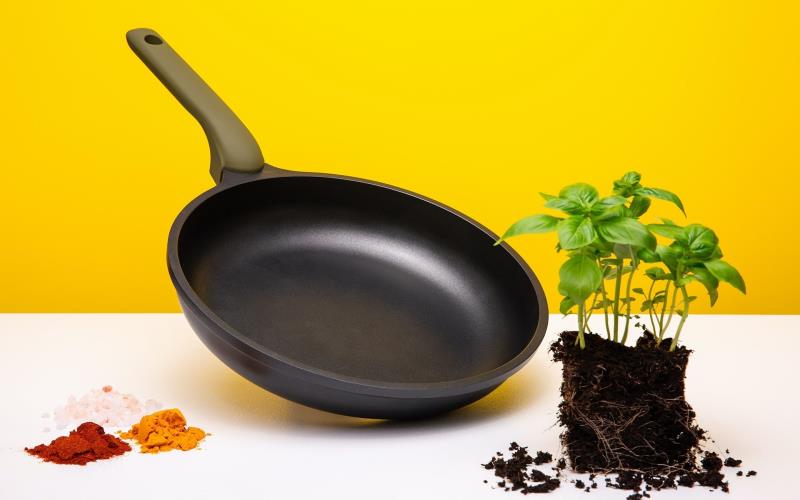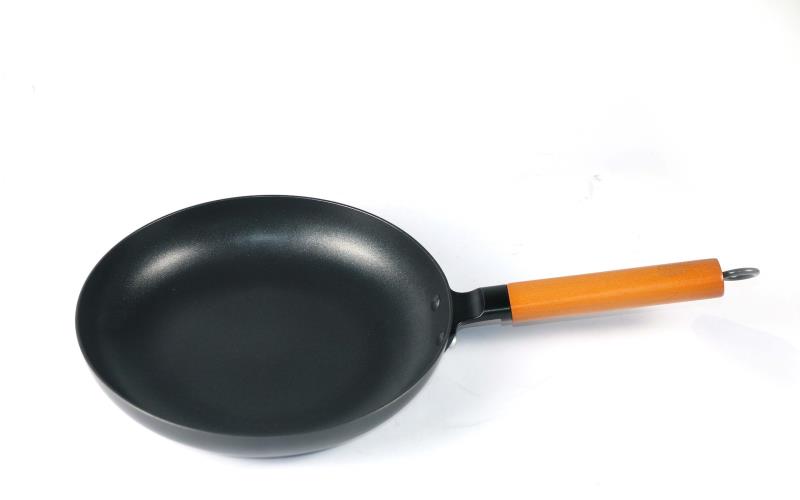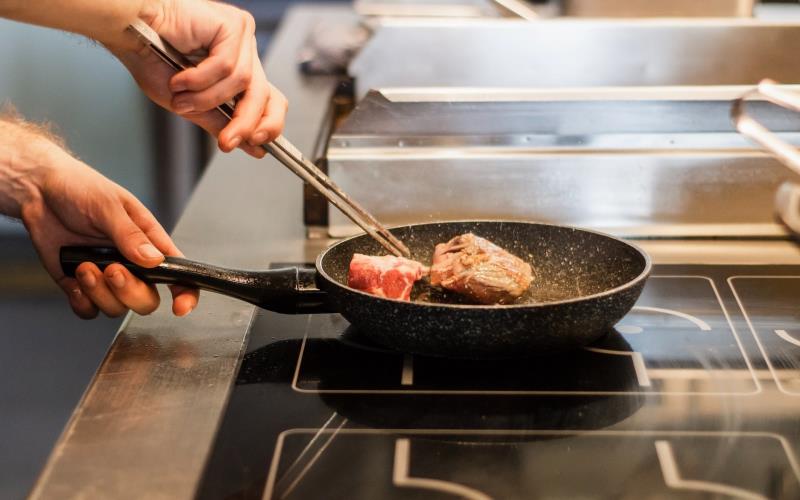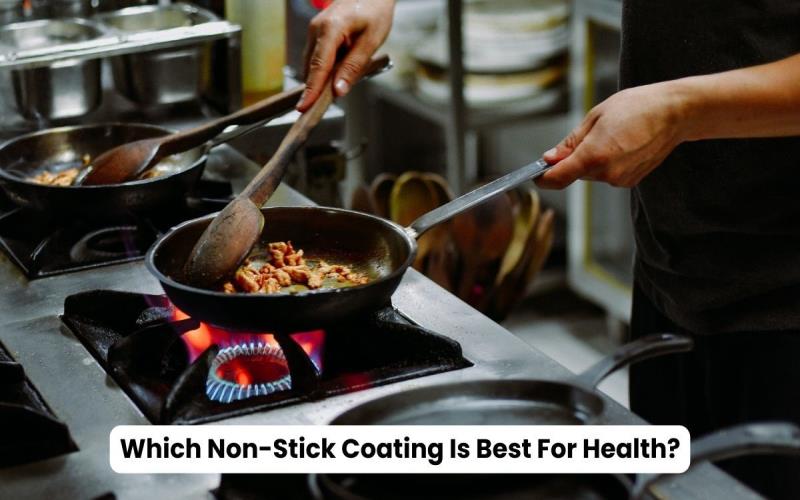In the realm of kitchen essentials, the choice of cookware can significantly impact not only the culinary outcome but also our overall well-being. As we navigate the myriad options, the question arises: which non-stick coating is best for our health? In a market flooded with alternatives, each boasting distinct features, it becomes imperative to sift through the layers of information.
This article explores the mystery behind non-stick coatings, dissecting the health implications of popular choices. Join us on a journey to demystify the world of non-stick cookware, empowering you to make informed decisions that harmonise with your culinary aspirations and well-being.
What is Coating in Nonstick Cookware?

In culinary convenience, nonstick cookware takes centre stage, offering a seamless cooking experience. At the heart of these pots and pans lies a crucial element: the coating. Understanding what this coating is and how it functions is pivotal for anyone seeking to make informed choices in the kitchen.
In simple terms, the coating in nonstick cookware is a specialized layer applied to the cooking surface, designed to prevent food from sticking. But, delving deeper, one discovers various materials and technologies employed in these coatings, each with unique attributes. From classic polytetrafluoroethylene (PTFE) to ceramic and beyond, the world of nonstick coatings is diverse and nuanced.
Exploring the intricacies of these coatings unveils their impact on cooking performance, durability, and, importantly, health considerations. As we dissect the layers of nonstick cookware, we uncover the secrets behind their slick surfaces and the role coatings play in shaping our cooking adventures. For optimal results, consider using Non Stick Pans on Electric Stoves to enhance your culinary experience
Non-Stick Coating Types:

Regarding culinary prowess, the right kitchen tools can make all the difference. Non-stick cookware has become a staple in kitchens worldwide, revolutionizing how we cook and clean up. But have you ever wondered about the magic behind that slippery surface? Let’s dive into the fascinating world of non-stick coating types, exploring the different formulations that make our cooking adventures smoother than ever.
1. Polytetrafluoroethylene (PTFE): The Pioneer of Non-Stick
Polytetrafluoroethylene, or PTFE, is the granddaddy of non-stick coatings. Discovered by accident in 1938, this synthetic polymer boasts an impressive resistance to heat and chemicals. It’s the magic ingredient in the well-known brand name Teflon. PTFE coatings provide a near-frictionless surface, making it the go-to choice for various cookware, from frying pans to baking sheets. The key to its non-stick prowess lies in the carbon-fluorine bonds, which create an exceptionally smooth surface that repels food particles.
2. Ceramic Coatings: A Natural Touch
In recent years, ceramic non-stick coatings have become popular as an eco-friendly alternative to PTFE. These coatings often use a sol-gel formula, combining inorganic compounds to create a smooth surface. Ceramic coatings offer excellent non-stick properties without PFOA or PTFE, addressing concerns about potential chemical emissions during cooking. The natural appeal of ceramics extends beyond its non-stick capabilities; it’s also known for quick and even heat distribution.
3. Anodized Aluminum: Hard as Nails
Non-stick coatings aren’t limited to pans with a classic black or white appearance. Anodized aluminum cookware takes a different approach by altering the surface of the metal itself. Through an electrochemical process, the aluminum develops a hard, non-porous layer resistant to scratches and corrosion. While not inherently non-stick, anodized aluminum cookware often undergoes an additional non-stick treatment to provide that coveted easy-release surface.
4. Diamond-Infused Coatings: A Cut Above
For those who crave durability, diamond-infused non-stick coatings add a touch of luxury to the kitchen. These coatings incorporate tiny diamond particles, renowned for their hardness, into the non-stick formula. The result is a robust surface that can withstand the rigors of metal utensils and high temperatures. Diamond-infused coatings are a testament to the continuous innovation in non-stick cookware, providing a long-lasting solution for avid home cooks.
5. Silicone-Based Coatings: Flexibility Meets Non-Stick
Silicone, known for its flexibility and heat resistance, has found its way into non-stick coatings. Silicone-based non-stick surfaces offer excellent release properties and are often used in bakeware. The flexibility of silicone makes it easy to de-mold baked goods, and its heat resistance ensures the coating remains stable even at high temperatures. While less widespread than PTFE or ceramic coatings, silicone-based options provide unique advantages for specific culinary applications.
6. Seasoned Cast Iron: Traditional Non-Stick Mastery
While not a coating in the traditional sense, the seasoned surface of cast iron cookware deserves an honorable mention in the non-stick Hall of Fame. A natural non-stick layer forms on the cast iron surface by heating oil at high temperatures. This layer, known as the seasoning, prevents food from sticking and imparts a rich flavor to dishes over time. Seasoned cast iron is revered for its versatility, durability, and timeless appeal.
Which Non-Stick Coating Is Best For Health?

Regarding cookware, the type of non-stick coating you choose can significantly impact your cooking experience and your health. In a market flooded with options, making an informed decision is crucial. Let’s delve into the top non-stick coatings and unravel the healthiest choice for your kitchen.
1. Ceramic Coating: A Natural Contender
Ceramic non-stick coatings have gained popularity for being a more natural option. Typically made from inorganic minerals, these coatings boast a soft surface that prevents food from sticking. From a health perspective, ceramic coatings are known for being free from harmful chemicals like PFOA and PTFE. This makes them a compelling choice for health-conscious individuals.
2. Cast Iron: Tradition Meets Health
While not a conventional non-stick coating, cast iron cookware develops a natural non-stick surface over time with proper seasoning and usage. This age-old method has its health merits, as it adds a dose of dietary iron to your meals. However, it requires meticulous care to maintain its non-stick properties, making it a choice for those who enjoy the process as much as the result.
3. Titanium: Tough on Stickiness, Gentle on Health
Titanium-based non-stick coatings offer durability and excellent resistance to scratches. These coatings are often combined with other materials like ceramic for enhanced non-stick performance. From a health perspective, titanium coatings are generally considered safe and free from PFOA and PTFE. Their robust nature makes them suitable for those who prefer long-lasting cookware.
4. Hard-Anodized Aluminum: A Sturdy Contender
Hard-anodized aluminum cookware is known for its exceptional durability and even heating. The anodization process creates a robust surface that resists scratches and corrosion. To ensure optimal health benefits, selecting hard-anodized aluminum cookware that is PFOA and PTFE-free is crucial. While these coatings provide excellent non-stick properties, using wooden or silicone utensils can help maintain longevity.
5. Stainless Steel: A Safer Option
While not traditionally non-stick, stainless steel has found its way into this category through innovative designs and coatings. Look for stainless steel cookware with added layers like aluminum or copper for enhanced heat distribution. Opting for a stainless steel pan with a non-stick coating free from PFOA and PTFE ensures a safer cooking experience without compromising durability.
In short, the healthiest non-stick coating for your kitchen depends on your preferences and cooking habits. Ceramic coatings stand out for their natural composition, while titanium and hard-anodized aluminum offer robust options. Traditionalists might find cast iron a timeless choice, and those leaning towards stainless steel can enjoy a safer non-stick experience. Consider your priorities and cooking style to make the best choice for a healthier and more enjoyable time in the kitchen.
Conclusion:
At the end of this article, you’ve navigated the flavorful labyrinth of non-stick coatings, uncovering the secret sauce for a healthier culinary adventure. As we bid farewell to the sizzling debate between Teflon, ceramic, and the timeless cast iron, the stage is illuminated with the radiant charm of ceramic coating.
This unsung hero not only boasts non-toxic prowess but also stands resilient in the face of scorching kitchen endeavors. With this knowledge, embark on your gastronomic journey, letting the pots and pans be the unsung heroes of your health-conscious kitchen.
So, dear reader, the culinary stage is set—let the cooking commence with a dash of health and a sprinkle of flavor.


